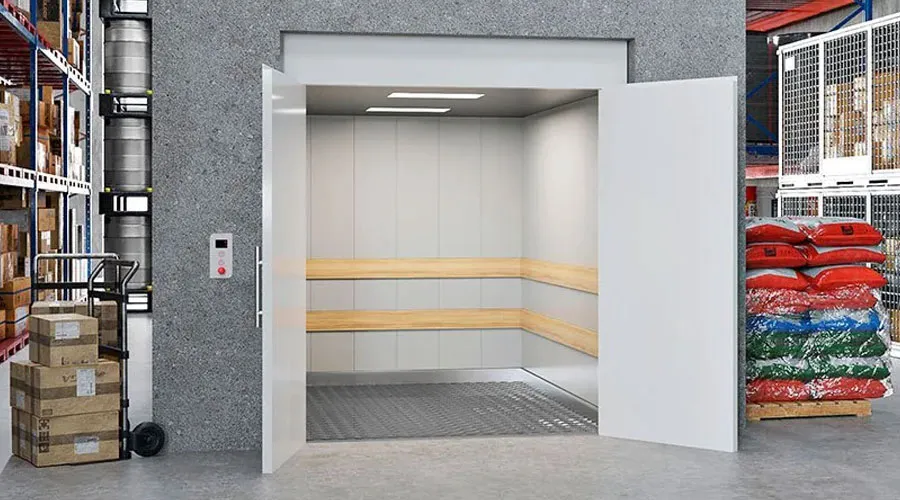Contact us today to discuss your project and experience the best in the industry!

Planning a commercial lift upgrade can be a strategic decision that not only enhances the efficiency and safety of a building's vertical transportation system but also provides a significant return on investment (ROI) over time. To maximize the benefits of a lift upgrade, thorough planning and consideration of various factors are essential. From assessing the current lift performance to evaluating the potential ROI and selecting the right lift system, each step in the planning process plays a crucial role in the overall success of the upgrade project. This article aims to provide a comprehensive guide on how to plan a commercial lift upgrade for maximum ROI, covering key considerations, strategies, and best practices to ensure a successful and cost-effective lift modernization project.
When it comes to evaluating if your commercial lift needs an upgrade, start by looking at its current performance. Is it sluggish, prone to breakdowns, or causing delays? Identifying these pain points can help determine if an upgrade is necessary. Safety should always be a top priority. Check for any compliance issues with regulations and standards. An outdated lift might pose risks not only to passengers but also to your business in terms of liability. Addressing safety concerns is crucial in assessing the need for an upgrade.
Define your objectives clearly before embarking on a lift upgrade project. Establish key performance indicators (KPIs) to track the success of the upgrade. Whether it's improving speed, reliability, or user experience, having measurable goals will keep the project on track. Ensure that the upgrade aligns with your broader business objectives. Will the new lift system improve operational efficiency, enhance customer experience, or increase property value? Aligning the upgrade with your business goals ensures that you achieve maximum ROI.
Estimating the costs of the lift upgrade is essential to determine the feasibility of the project. Consider expenses such as equipment, installation, and ongoing maintenance. Compare these costs to the potential return on investment (ROI) to make an informed decision. Calculate the potential ROI by factoring in increased efficiency, reduced maintenance costs, and any potential revenue gains from improved customer experience. A thorough cost-benefit analysis will help you assess if the upgrade is a financially sound decision.
When selecting a new lift system, consider factors beyond just functionality. Opting for an energy-efficient and sustainable model can lead to long-term cost savings and environmental benefits. Look for features like regenerative drives or LED lighting that contribute to energy efficiency. Explore different lift options, such as hydraulic and traction lifts, to find the best fit for your commercial space. Consider factors like space requirements, speed, and maintenance needs to choose a system that offers maximum ROI. Making an informed decision on the lift system will ensure that your upgrade delivers long-term value.
Before diving into your commercial lift upgrade project, it's crucial to make sure you have all the necessary permits and compliance in place. Don't let paperwork hold up your progress – get ahead of the game by ensuring your project meets all regulatory requirements. Nobody wants the lift upgrade police knocking at the door!
Time is money, so make sure you have a solid plan in place for the installation process and any potential downtime. Minimize disruptions by coordinating installation during off-peak times and keeping stakeholders informed every step of the way.
Teamwork makes the dream work! Keep the lines of communication open with your contractors and stakeholders throughout the project. Collaboration is key to ensuring a smooth and successful commercial lift upgrade.
Prevention is better than cure – establish a regular maintenance schedule to keep your newly upgraded lift in top-notch condition. Don't wait for things to break down before taking action!
Get tech-savvy and leverage IoT and remote monitoring technologies to keep an eye on your lift's performance. Harness the power of data to predict maintenance needs and ensure your lift is always running smoothly.
Numbers don't lie! Keep track of key performance metrics post-upgrade to gauge the ROI of your commercial lift project. Use data to make informed decisions and identify areas for improvement.
Don't rest on your laurels – strive for continuous improvement and upgrades to maximize the long-term ROI of your commercial lift. Stay proactive and stay ahead of the game to keep those ROI numbers looking sharp!In conclusion, a well-planned commercial lift upgrade can not only improve the overall functionality and safety of a building's vertical transportation system but also yield a significant return on investment in the long run. By following the outlined steps, from assessing the need for an upgrade to evaluating the ROI and implementing effective maintenance strategies, businesses can ensure that their investment in a lift modernization project is both financially beneficial and operationally efficient. With careful planning and attention to detail, a commercial lift upgrade can be a valuable asset that enhances the overall performance and value of a property for years to come.